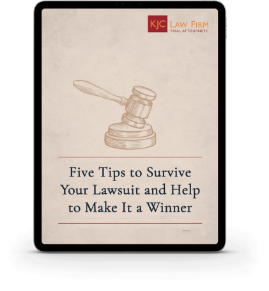Many of us know someone who has experienced some form of sexual harassment at work… maybe you have experienced it yourself at work. What’s important to understand is that sexual harassment should never be a normal part of your workday. Whether it happens to a woman or to a man, sexual harassment in any form is unacceptable.
What is Sexual Harassment… According to Federal Law
According to the National Partnership for Women and Families’ Know Your Rights Manual, the law states that a workplace situation is considered a sexual harassment case if:
- You didn’t get a job—or lost a job—because you didn’t give in to the harassment
- You had to go along with the harassment to get a raise or better work schedule
- The harassment makes the work site hostile, scary, or uncomfortable.
Let’s explain this further. There are two types of sexual harassment recognized by federal law: quid pro quo and hostile work environment.
Quid pro quo refers to situations where employee benefits (hiring, raises, promotions, vacation time, etc.) are contingent upon the employee providing sexual favors. Quid pro quo is a Latin phrase that basically means “something for something.” These sexual harassment cases apply to employee verse supervisor situations. This is because supervisors commonly have the power to grant or eliminate biases; however, this doesn’t mean that sexual harassment cases cannot occur between equal-leveled employees. An example of a quid pro quo in the workplace might involve a supervisor offering an employee a promotion only if the employee gives the supervisor a kiss. Regardless of the supervisor’s intentions, this is an example of sexual harassment should not go unnoticed by the company or organization.
Hostile work environment sexual harassment refers to situations where the workplace is made to be an intimidating, hostile, threatening, or offensive environment due to unwelcome sexual conduct. This form of sexual harassment often interferes with an employee’s ability to perform and succeed in his or her job position. Examples of hostile work environment sexual harassment might include offensive sexual comments/jokes/nicknames, discussions about sexual topics, and the display of sexually-oriented photos or cartoons. Later in this article, we will provide a real-life example of a hostile work environment sexual harassment that resulted in a civil lawsuit against the state of Rhode Island.
Tips to Combat Sexual Harassment in Your Workplace
Confront Your Harasser
I know, this is easier said than done. In many cases, confronting your harasser in the workplace is extremely intimidating and oftentimes avoided. However, telling your harasser that you do not approve of his or her actions is the most important step in ending workplace harassment. You can confront your harasser verbally but, experts advise an electronic communication such as email for the following reasons:
- Telling your harasser you do not approve of his or her actions via email creates a definitive electronic account of the incident with proof of notice and receipt.
- Less obvious but equally as important… people are often emotionally impulsive during non-face-to-face confrontations. Over email, you are more likely to receive an incriminating, emotionally-driven reply from the harasser that supports your account of sexual harassment.
Write Down What Happened
Not only will it help you compartmentalize what happened at the moment but, having a written account of what happened to you is vital in the long-run. If you experience sexual harassment in your workplace, write down everything; such as, words spoken, actions are taken, time of day, witnesses, and who you confided in afterward. This step is hugely important when providing evidence for and supporting your claims.
Talk to Coworkers
If you have been targeted at work, it is likely that you are not alone. Even if it’s for nothing more than your well-being, talk to other employees about your experience and see if anyone else has been harassed at your workplace as well. If you decide to take the next step and stop the harassment, there is power and numbers.
Report the Harassment to Your Supervisor ASAP
Report the harassment to your supervisor as soon as possible and ask that immediate action be taken. Again, an electronic account of any and all communication regarding your harassment adds strength to your claims. So, if you prefer to report it to your supervisor in person, be sure to send an email or another writing to memorialize (document) your meeting so that you have proof in writing. NOTE: If your supervisor is the harasser, report it to your supervisor’s boss.
File a Formal Complaint
File a formal complaint either with your place of employment or your union if these options are available to you. Otherwise, contact the human resources department at your employment. You may also want to file a complaint with the appropriate government agency and/or file a lawsuit. NOTE: In most cases, the charge must be
filed no longer than 180 days after the harassment happened.
* Some of the above tips came from the National Partnership for Women and Families’ Know Your Rights Manual
Remember to Keep A Paper Trail
One of the biggest challenges in sexual harassment cases is lack of evidence since most people who inflict sexual harassment upon others do not do it out in the open. Sadly, many of these cases involve the classic “he said” “she said” dispute, which can make it easier for employers to justify inaction or turning a blind eye. The best way to avoid the “he said” “she said” predicament is to document the sexual harassment whenever possible and as clearly as possible.
As former ESPN Analyst, Adrienne Lewis, explains in her new book, “Staying in the Game: The Playbook for Beating Workplace Sexual Harassment,” it is important to build a record of the ongoing workplace sexual harassment by keeping a paper trail. This can include saving emails, text messages, or other written communications from your harasser. When no such written evidence exists, then it is important to document the ongoing sexual harassment on your own, whether it be keeping a journal or written log with the dates/times of each incident of sexual harassment, or telling someone at work about the harassment after each incident.
For more information on ways to document incidents of sexual harassment, read Adrienne Lewis’s new book, which provides a comprehensive guide geared to employees on how to beat sexual harassment at work. You can also Watch KJC Law Firm’s video interview with Adrienne Lawrence here to learn more about Adrienne’s career, personal stories, and advice.
How Can You Fight Back
Although winning a sexual harassment case may seem impossible to some, there are countless examples of former/current employees who were victims of sexual harassment, fought for justice, and won! For example, Lori Franchina, a former Rhode Island firefighter who claimed that colleagues discriminated against her because of her sexual orientation and gender, was awarded more than $800,000 in federal court. Franchina filed a civil-rights lawsuit in 2012 after she says she endured years of harassment, lewd nicknames, insubordination, and discrimination. Finally, in 2016 the federal court ruled in Franchina’s favor. Although there is no compensation for years of workplace induced anxiety, depression, and PTSD, this court ruling came as an incredible relief to Franchina and her support system. Franchina explained that being the target of sexual harassment in her workplace “had an effect almost every day…It breaks you. It wears you down. You still try to come to work every day and do your job well,” – Eyewitness News. She continued to say, “I think it’s really important for others to know that if this is happening, or has happened, that they need to stay the fight,” – NBC News.
As the First Circuit Court of Appeals pointed out in its opinion, “employers should be cautioned that turning a blind eye to blatant discrimination does not generally fare well under anti-discrimination laws like Title VII.” To learn more about the details of Franchina’s case, read the full text of the First Circuit Court of Appeals opinion here.
Sticking up for yourself in the face of workplace sexual harassment is never easy, but you are not alone. The first step in fighting back begins with recognizing the situation for what it is and asking for help.
If you need professional help, contact the legal team at KJC Law Firm LLC.






